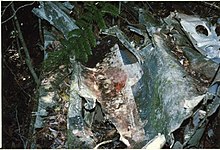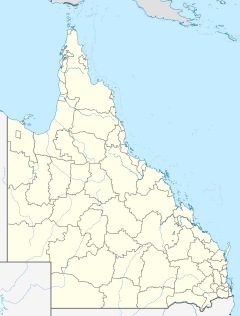Mount Bartle Frere
| Mount Bartle Frere | |
|---|---|
| Highest point | |
| Prominence | 1,316 m (4,318 ft) |
| Isolation | 882.43 km (548.32 mi) |
Mount Bartle Frere is the highest mountain in Queensland at an elevation of 1622 metres. The mountain was named after Sir Henry Bartle Frere, a British colonial administrator and then president of the Royal Geographical Society by George Elphinstone Dalrymple in 1873. Bartle Frere was British Governor of Cape Colony at the outset of the Zulu Wars.
The Aboriginal name is Chooreechillum.
It is located 70 km south of Cairns in the Wooroonooran National Park next to the town of Babinda on the edge of the Atherton Tablelands. Mount Bartle Frere is in the wilderness of the Bellenden Ker Range and the watershed of Russell River.
The foothill to summit is entirely covered by rainforest, ranging from typical tropical rainforest in the lowlands to low "cloud forest" at the cooler summit, where temperatures are probably 10°C (18°F) lower than on the coast.
History
The first European to scale the mountain was Christie Palmerston in 1886. He blazed a tree at the summit "'P' October 26,'86." Reference: 'The Diary of a Northern Pioneer' Christie Palmerston's Experiences published in Queensland Figaro 23/4/1887. Its immediate neighbour Mount Bellenden Ker is the second highest mountain in Queensland at 1593 metres.

On 21st April, 1942 an American Air Corp B-25 Mitchell medium range bomber (41-12455), from the 3rd Bomb Group, 90th Bomb Squadron crashed on the mountain with the loss of all seven crew members. This particular aircraft had only recently returned from the famous Royce Raid against Japanese forces in the Philippines.
Climbing
The summit of Mt Bartle Frere, when it is not covered in cloud, offers the chance to view both the coastal lowlands and the Atherton Tablelands. The climb can be quite steep in places with rock scrambling being required. Sudden weather changes have been known to occur in the area.
The ascent to the summit can be quite treacherous and many tourists have become lost while climbing the mountain. The main reasons for this are the unpredictable weather, poor preparation and occasionally obscure track markers. Nonetheless, an experienced climber should have no problem summiting after an early start from the Josephine Falls car park.
The total distance from Josephine Falls is 15 km return and would normally take between 10-12 hours. The vertical elevation gained is around 1500 metres. This area of Queensland records several metres of rain every year, so it is not usual for the peak to be covered in cloud. The best time to climb Bartle Frere is during winter when the weather is cooler and lower likelihood of rain. There are orange markers every kilometre along the trail although several of these are difficult to spot.
An easier alternative is to approach from a small camp site at the western side. It is reachable by car via Topaz Road and Gourka Road. From this starting point (at an altitude of 700 m), it's relatively easy to complete the climb and descent in a day. It is a favourite with local bushwalking clubs and is best attempted in the dry winter months, from June to October. Walking during the wet season (December to April) brings with it the risks of torrential tropical downpours, poor visibility and leeches. Rock slips occur occasionally.
There is a shorter 10 km return trail to 'Broken Nose', a spur feature on the southern side from Josephine Falls. Although there is a large map at the Joesephene Falls carpark, there are no other maps or ranger station before the climb. You would need to purchase a map prior to attempting the walk.
Despite the treacherous climb, reaching the top offers an amazing view of the surrounding area.
Climate
Although no rain gauge exists on the mountain, data at nearby Mount Bellenden Ker suggest an annual average rainfall of around 9,000 millimetres (350 in), and an estimated potential maxima as high as 17,000 millimetres (670 in), both of which would make the mountain one of the wettest places in the world. Even in what constitutes the "dry" in most of tropical Australia, rainfall on the summit is very heavy at around 800 millimetres (31 in) in May and 350 millimetres (14 in) in August, whilst in the wettest month of March estimated averages are as high as 1,800 millimetres (71 in) and maxima around 6,000 millimetres (240 in). Calculations based on available lowland data (from Innisfail, Cairns and Port Douglas) would suggest daily rainfalls could have been potentially as high as 2,000 millimetres (79 in) during a cyclone in 1911 - which if accurate would be the highest daily rainfall in the world.


